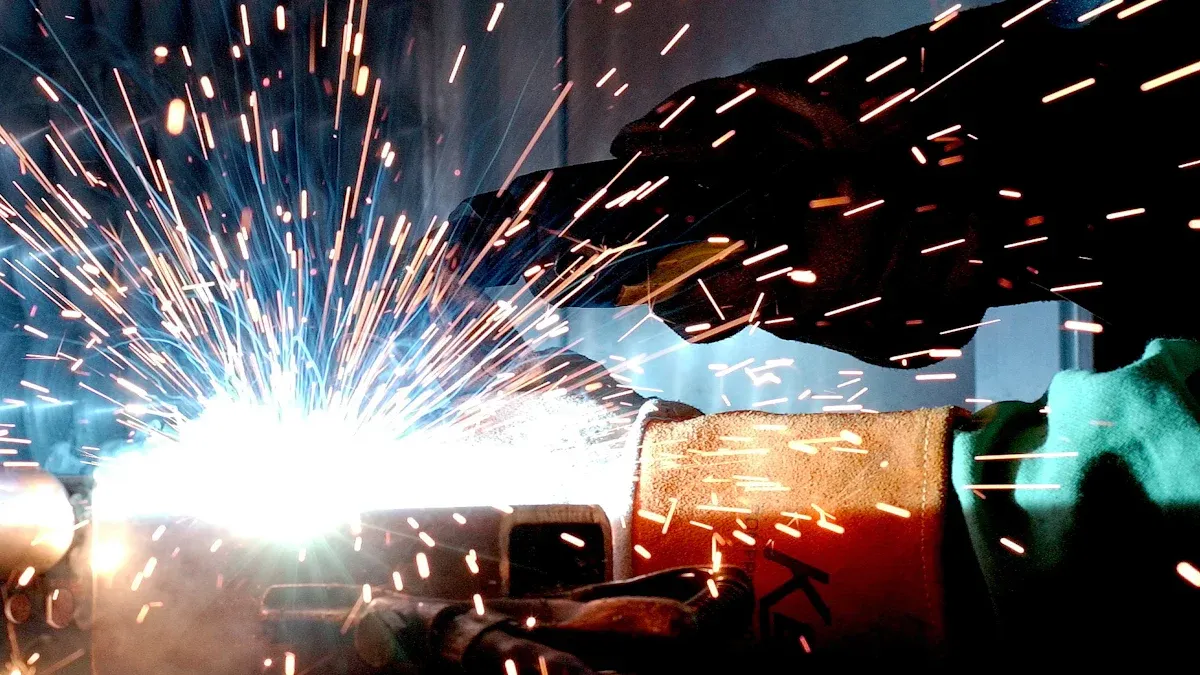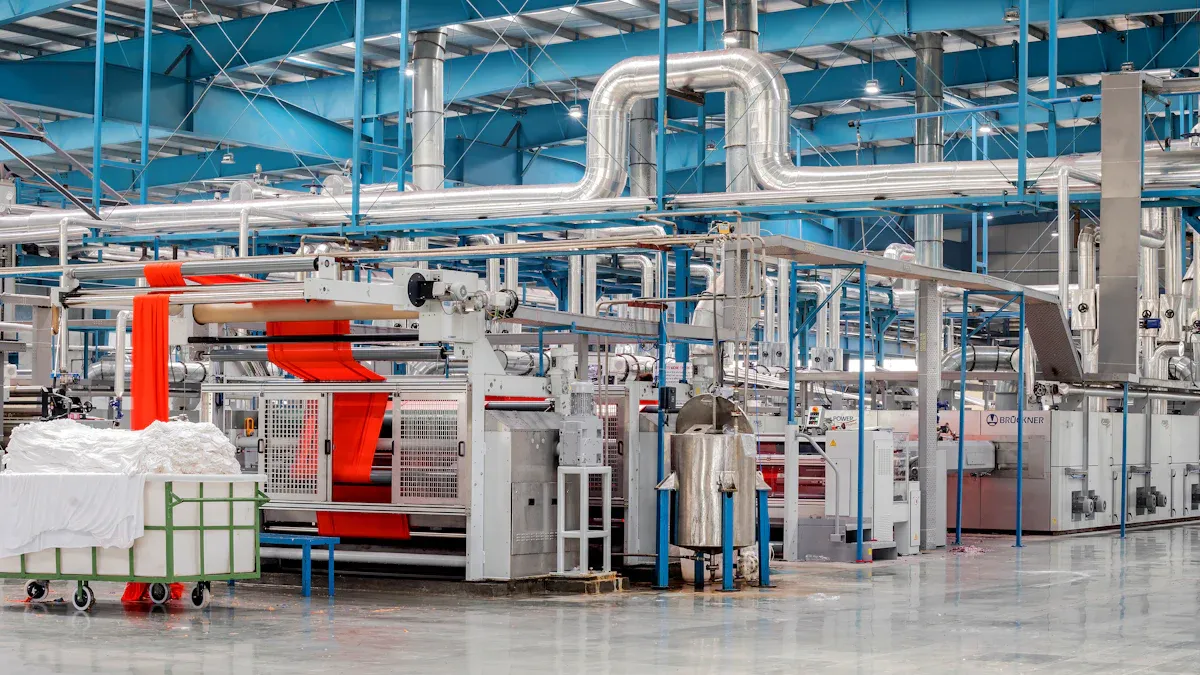PPAP Explained: The Key to Quality Manufacturing

The Production Part Approval Process (PPAP) checks if parts are correct. It makes sure all parts meet design and quality rules. This process lowers risks by stopping mistakes and bad parts. It keeps things steady with clear records and checks for each step. PPAP also manages changes and studies the process carefully. This helps keep production stable and trustworthy. With strong supplier tests, you can deliver good parts on time. It also helps avoid expensive problems or returns.
Key Takeaways
PPAP makes sure parts match design and quality rules before production. This lowers the chance of mistakes.
The process uses clear records and checks to keep production smooth and quality high.
PPAP helps suppliers and manufacturers trust each other. This improves teamwork and talking.
PPAP finds problems early and makes approvals faster. This saves time and money.
Using PPAP helps meet customer needs regularly. It ensures success in manufacturing over time.
What is PPAP and Why is it Important?
What Does the Production Part Approval Process Mean?
PPAP, or Production Part Approval Process, is a standard method. It checks if parts meet design and quality rules before production. This process ensures suppliers can make parts that meet customer needs. It is very important in industries like cars and airplanes. These industries need parts to be precise and reliable.
PPAP has many steps, like writing down designs and testing processes. It also checks the quality of parts made by suppliers. This process makes sure suppliers know what customers want and can deliver it. By using PPAP, you can avoid mistakes, save money, and keep quality high.
Main Goals of PPAP
PPAP’s main purpose is to confirm parts meet requirements. It also checks if your production methods are steady and reliable. Some key goals include:
Make sure all suppliers follow the same approval steps.
Prove that the production process is stable and works well.
Check any changes in design or production carefully.
Lower the chances of defects and customer complaints.
For example, PPAP asks you to record things like designs and test results. These steps show that your process can meet customer needs every time.
Why PPAP Matters in Quality Manufacturing
PPAP is important for keeping parts high-quality. It ensures your production meets customer needs and avoids problems. Using PPAP builds trust with customers and improves teamwork with suppliers.
This process also helps find and fix problems early, saving time. Testing and checking make sure only good parts are made. PPAP also helps you improve by using data to make processes better.
How Does the PPAP Process Work?

Overview of the PPAP Workflow
The PPAP workflow ensures each production step meets quality rules. It starts with suppliers checking sample parts to match designs. This check includes making a Process Flow Diagram. The diagram shows every step, from materials arriving to final delivery. Control plans are also made to keep products consistent.
Suppliers submit a PPAP Reporting Package, which has up to 18 parts. These include the Part Submission Warrant (PSW), Dimensional Results, and Material Tests. Submission levels go from Level 1, needing only the PSW, to Level 5, which includes samples and full documents at the supplier’s site.
PPAP Level | What the Supplier Submits |
|---|---|
Level 1 | PSW |
Level 2 | PSW with some documents |
Level 3 | PSW with all documents |
Level 4 | PSW and proof of compliance |
Level 5 | PSW, samples, and all documents |
The Role of Documentation in PPAP
Documents are very important in the PPAP process. They prove the production process is steady and makes good parts. For example, Measurement System Analysis (MSA) checks if measuring tools are correct. Initial Process Studies use SPC charts to keep processes within limits.
Other key documents include Dimensional Results, which check if part sizes match designs. Material Tests confirm materials meet standards. The Appearance Approval Report (AAR) checks if the product looks right. Lastly, the PSW sums up everything, showing all rules are followed.
Documentation Example | Description |
|---|---|
Measurement System Analysis (MSA) | Checks tools for accurate measurements. |
Initial Process Studies | Uses SPC charts to check process stability. |
Dimensional Results | Confirms part sizes match designs. |
Records of Material and Performance Tests | Proves materials meet standards. |
Appearance Approval Report (AAR) | Confirms product looks meet customer needs. |
Part Submission Warrant (PSW) | Summarizes submission and confirms compliance. |
Key Stakeholders in the Production Process
Many people are important in the PPAP process. Suppliers check sample parts and prepare documents. Their early work helps avoid delays. Quality engineers make sure standards are followed and quality is met.
Production managers handle resources and keep things running smoothly. Involving them early helps the process go well. Compliance teams check that rules are followed. This lowers risks of breaking laws or industry standards.
Impact on Production Process | |
|---|---|
Suppliers | Help avoid delays and meet expectations. |
Quality Engineers | Ensure standards and quality are met. |
Production Managers | Manage resources and keep processes smooth. |
Regulatory Compliance Teams | Check rules are followed and reduce risks. |
What Are the PPAP Standard Requirements?
The 18 Elements of PPAP Documentation
PPAP has 18 key parts to check quality and design. These parts show how well your factory works and follows rules. Here are the main parts:
Design Documentation: Shows drawings and details about the part’s shape and materials.
Engineering Change Documentation: Keeps track of changes and gets them approved.
Customer Engineering Approval: Proves the customer checked and approved the design.
Design Failure Mode and Effects Analysis (DFMEA): Finds design problems and fixes them.
Process Flow Diagram: Explains each step in making the product.
Process Failure Mode and Effects Analysis (PFMEA): Points out risks in making parts and how to fix them.
Control Plan: Makes sure quality stays the same at every step.
Measurement System Analysis (MSA): Checks if tools measure things correctly.
Dimensional Results (FAI): Confirms part sizes match the design.
Material and Performance Test Results: Proves materials meet the needed standards.
Initial Process Studies: Shows the process is steady when starting production.
Qualified Laboratory Documentation: Confirms tests and results are done properly.
Appearance Approval Report (AAR): Checks if the product looks right.
Sample Production Parts: Tests parts from a trial run to check readiness.
Master Sample: Acts as a guide for future production.
Checking Aids: Lists tools used for testing and checking.
Customer-Specific Requirements: Shows the product meets special customer needs.
Part Submission Warrant (PSW): Summarizes all documents and proves compliance.
These parts are the base of PPAP, helping you make high-quality products every time.
The Five Submission Levels of PPAP
PPAP has five levels to decide how much proof is needed. Each level shows how detailed the approval process is:
Submission Level | Description |
|---|---|
Level 1 | Only the PSW is needed, no samples or data. |
Level 2 | Includes samples and some test data. |
Level 3 | Needs PSW, samples, and all supporting data. |
Level 4 | PSW with extra customer-specific requirements. |
Level 5 | PSW, samples, and all data checked on-site. |
For example, Level 1 is the easiest and only needs the PSW. Level 5 is the hardest and includes checking everything at the factory. These levels help match the process to what customers and industries need.
The Role of the Part Submission Warrant (PSW)
The PSW is the most important part of PPAP. It is a promise that your process can always make good parts. The PSW has important details like:
Component | Description |
|---|---|
Drawing Numbers and Revisions | Lists the drawing numbers and any updates. |
Part Information | Gives details about the part being sent. |
Test Results | Summarizes the tests done on the part. |
Material Declarations Numbers | Lists materials used in the part. |
Deviations | Notes any differences from earlier submissions. |
To finish the PSW, follow these steps:
Fill out the PSW with all needed information.
Send the PSW and other PPAP documents to the customer.
Wait for the customer to approve it, showing your process meets all rules.
The PSW builds trust and shows your process is reliable, making it a key part of PPAP.
Benefits of Using PPAP in Manufacturing
Keeping Quality Steady in Production
PPAP helps keep production quality steady and reliable. Tools like SPC and clear records check if parts meet needs. Early process studies show if methods are stable and work well. This lowers the chance of bad parts and keeps quality high. The control plan explains how to check and keep quality during production. Following these steps ensures you make good products every time.
Building Trust Between Suppliers and Makers
PPAP builds trust between suppliers and manufacturers by being clear and open. It sets clear rules for product quality and design. Sharing data and meeting often during approval helps communication. This trust leads to better teamwork and problem-solving. A strong PPAP process helps both sides improve and succeed together. Working well together makes production smoother and more successful.
Making Production Faster and Better
Using PPAP can make production faster and better. Adding quality checks early stops problems before they happen. Digital tools help find and fix issues quickly. Keeping good records also helps meet rules. Involving key people early speeds up decisions and avoids delays. Faster approvals mean quicker product launches and lower costs. These changes save time and improve how well your factory works.
PPAP helps factories make parts that are always high-quality. By using its clear steps, you can avoid mistakes and bad parts. It also keeps production steady and reliable. PPAP helps suppliers and manufacturers work better together by building trust. It makes work faster and saves time and money. Using PPAP helps meet customer needs and succeed for a long time. Start using PPAP now to improve your factory and be known for great work.
FAQ
What does PPAP do in manufacturing?
PPAP makes sure all parts meet design and quality rules. It finds problems early, lowering risks and keeping things steady. This process helps suppliers and manufacturers trust each other by ensuring reliable results.
How is sampling done in PPAP?
Sampling means testing a few parts to check if they are correct. These tests prove the production process works well. This step ensures mass-produced parts will have the same good quality.
Why is the Part Submission Warrant (PSW) needed?
The PSW is an agreement between you and your customer. It shows your process can always make parts that meet all rules. This document is key for getting final approval in PPAP.
What if a part fails during PPAP?
If a part fails, you must find and fix the problem. This could mean changing designs, improving steps, or testing more parts. After fixing it, you send updated documents for approval again.
Can PPAP work outside car-making?
Yes, PPAP is useful in industries like planes and electronics. Any field needing strict quality checks for parts can use it. It helps ensure reliable results and steady production quality.
See Also
Exploring QFD, FMEA, and DOE's Impact on Quality
A Supplier's Guide to CBAM and Sustainable Casting
Seven Essential Steps to Collaborate with Diecast Factories
The Advantages of CAE Analysis in Die Casting Design
How Cutting Die Blanking Enhances Manufacturing Efficiency
About Hunan Puka
Established in 2016 and based in Hunan, China, with a liaison point in Berlin, we are a Tier 2 supplier for the automobile industry. We specialize in the production of customized aluminum die-casting parts designed for machines with a closing force ranging from 280 to 1250 tons, with subsequent manufacturing process CNC machining and surface treatment. Our commitment to quality is reflected in our accredited quality management system, certified by ISO9001:2015 and IATF16949:2016 standards.


